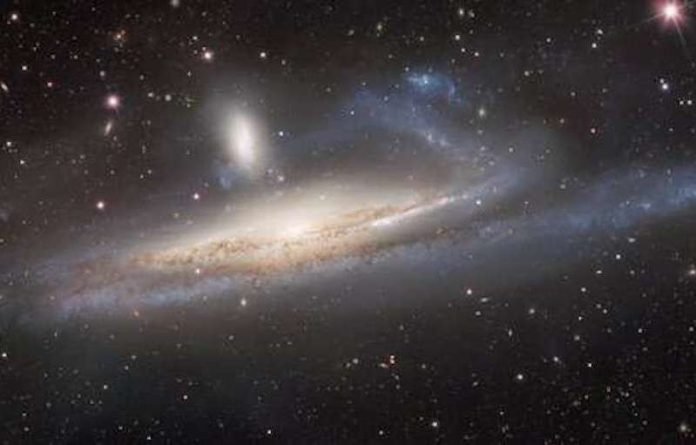
Have you ever wondered how galaxies get so big? It turns out, they grow by pulling in smaller galaxies nearby and joining with other galaxies.
A new image showing how this happens was captured using a special camera at the National Science Foundation’s Observatory.
The Galaxy Named Haley’s Coronet
Haley’s Coronet, or NGC 1532, is a big spiral galaxy found around 55 million light-years away from us. We see its spiral arms edge-on from Earth.
One arm appears to move downward while the other seems to rise upward. This is because it’s tugging on a smaller galaxy, NGC 1531. With time, NGC 1532 will fully absorb its smaller companion.
What Happens When Galaxies Meet
While NGC 1531 might be small, it has a strong pull on its larger neighbor. It has even distorted one of its spiral arms.
Also, you can see streams of gas and dust between the two galaxies, like a bridge. This pull and push have triggered the birth of new stars in both galaxies.
This cosmic pull of war shows us how big galaxies like NGC 1532 grow. They eat up smaller galaxies and take in their stars and the material needed to form new stars.
Our Milky Way galaxy has grown in the same way, likely six times in the past. This has left trails of stars and other signs in its outer layers.
Different Ways Galaxies Merge
Galaxies merging can happen in two ways. The first is when a larger galaxy absorbs a smaller one, like what’s happening with NGC 1532 and NGC 1531.
The second is when two large spiral galaxies collide and form a new galaxy with its own shape and characteristics. The Milky Way and the Andromeda Galaxy will merge in this way in about four billion years.
Unraveling the Mysteries of the Universe
The special camera used to take the image, DECam, is great at capturing these galactic interactions in high detail.
It’s so sensitive that it can even pick up faint objects in our solar system and track the effects of dark matter on galaxies across the universe.
Today, DECam is used for a range of science projects. It helps us better understand the cosmic dance of galaxies and the mysteries of our universe.
The study was published in Astrophysical Journal.
Follow us on Twitter for more articles about this topic.
Source: Association of Universities for Research in Astronomy



